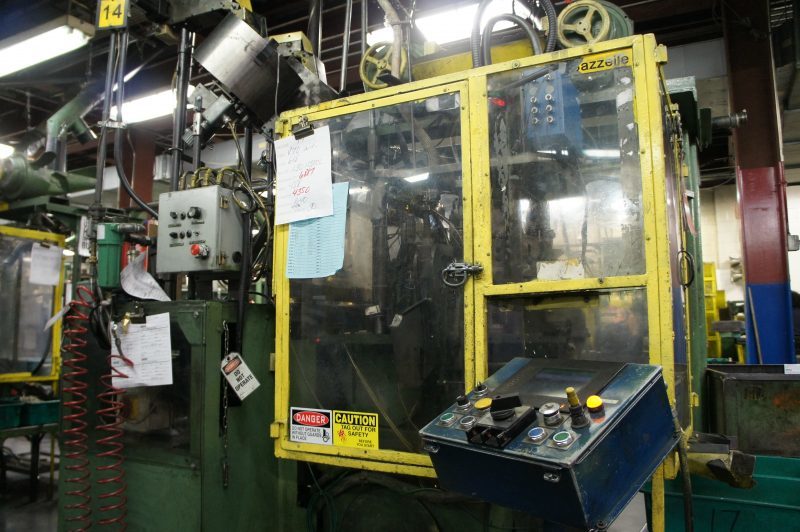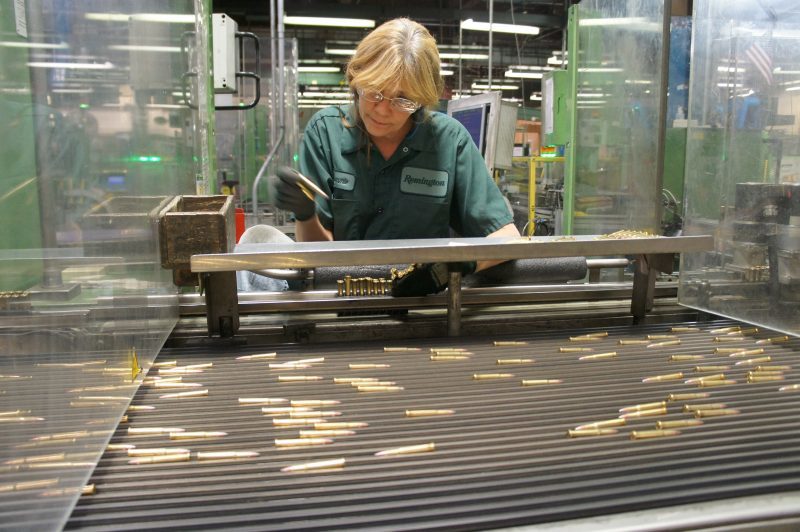LONOKE, Ark. --- In case you haven’t noticed, Remington Outdoor Company has had a tough couple of years.
Enduring the political turmoil of a post-Sandy Hook New York with an anti-gun governor at the helm who pushed new gun laws that made many of Remington’s products illegal in the state is one thing. Add to that, what many saw as the ham-handed way the centuries-old company handled its move to a new plant in Alabama — and the inevitable layoffs that resulted — gave Big Green another black eye it probably could have avoided.
Turmoil at several of the company’s subsidiaries, including Advance Armament Company, lit the blogosphere up in an anti-Remington rage while the company became embroiled in lawsuits — from Remington 700 trigger class actions, to trademark infringement suits — and the latest “negligent entrustment” case that claims the company’s Bushmaster subsidiary wrongly marketed a military rifle to civilians.
And that’s just the corporate stuff.
Who can forget the R-51 debacle; an innovative new 9mm concealed carry handgun based on an early 20th Century Pederson design that crashed and burned hard with a nationwide voluntary recall. Since that mid-2014 flub, ROC has released a few new products — including the RM380 pocket pistol — but none have truly caught fire. That’s lead many to believe Big Green had lost its mojo and was slowly slipping down the path to irrelevance.
Then in mid-2015 came news of a major management shakeup. Out went then-CEO and self-professed “gun guy” George Kolittides, and in his place came a mild-mannered, low-key “Mr. Fix-it” from the aerospace industry with a mission to steer one of the oldest names in firearms back on course.
But that didn’t mean new CEO Jim Marcotuli, known by his colleagues as “Marco,” wanted to pull sharply out of the company’s malaise with new product introductions and splashy PR campaigns. Instead, the methodical manager told Shooting Sports Retailer, the company needed to focus on three things: “safety, quality and efficiency.” Not the sexiest of business strategies, but a philosophy gained from his many years in the high-tech world of fighter jet manufacturing that put planes like the F-16 Fighting Falcon and F-22 Raptor into the air.
Shortly after Marcotuli took the helm at ROC — along with several new members of the board — the company laid off 41 at its Madison, North Carolina, corporate headquarters. Officials with Remington tell Shooting Sports Retailer on background the layoffs were a painful but necessary part of Remington’s course correction, and that Marcotuli’s style and focus on blocking and tackling is working.
“He’s exactly the right person for the job,” one source told us. “The layoffs were tough, but they needed to happen, and now we’re on the right track.”
A Fistful of Lead
There’s probably no better example of Remington’s emphasis on quality and manufacturing efficiency than the company’s new ammunition plant here in Lonoke, Arkansas. Big Green has been making everything from .22 LR rounds to 00 Buckshot shells in this factory for over four decades, cranking out billions of rounds and hundreds of thousands of ammunition component products every year.
Sure, ROC recently opened its new firearms manufacturing plant in Huntsville, Alabama. But it’s here in Lonoke where the sharp difference between old and new is on bold display.
Stepping onto the floor of the 1970s-era Lonoke 1 factory can be like walking into a 20th Century time warp, with huge iron machines stamping out bullets, rolling casings, pouring powders, loading primers and even plopping finished rounds into boxes for shipping. The noise is deafening, hydraulic fluid coats the floors and hundreds of employees oversee the the process with diligent expertise.
The original factory occupies a full 750,000 square feet, that’s over 17 acres of floor space stuffed with 1,300 pieces of equipment. There’s even a 10-story tower used to cool dripping molten lead to manufacture shot for Remington shells.
Plinkers can rest easy knowing that Remington’s Lonoke plant boasts “the fastest rimfire manufacturing process in the world,” one official told us.
“Everyone wants to know how we do it,” he added.
But it’s in the non-descript, warehouse-looking building just next door where we can see Remington’s reboot on full display.
Affectionately dubbed “Eli” after Remington Arms Company founder Eliphalet Remington, the new ammunition plant built on the Lonoke property is so state of the art, no photos were allowed for fear the competition might get wind of Remington’s secret ammo-making sauce.
Picture BMW’s Group Plant in Munich making 9mm Luger. Or for a more shooter-centric analogy, it’s like comparing an Ammobot-powered Dillon Super 1050 to a RCBS Single Stage hand press.
The floors in Eli are cooking show clean and the entire assembly process is one long chain. At one end there are coils of brass and lead going into the machines, at the finish of a long arc, there are 9mm rounds coming out in fistfuls.
“We’re the only one in the industry using wire to make the shells for the ammo,” said one Remington official. “That’s where the magic is.”
Looking around the antiseptic plant, about four Remington technicians slowly mingle through the machines, keeping an eye out for hiccups. But that was it — a far cry from its labor intensive, 1970s-era sister plant next door.
Engineers say the new factory, which has been open for little more than a year, can crank out 100,000 9mm rounds in one day. It’s so new, though, that the centerfire pistol round is all the machines are programmed to make for right now, but Eli’s managers are working toward programming the machines to make .45 ACP rounds next — and if that works, more centerfire cartridges will follow.
Building A Remington Family
Talking to senior staff at the company, it’s hard to avoid the sense of renewed purpose.
On the ammunition side, Remington is hitting on specific markets where the company sees an opening. According to executives, the company earns about half of its total sales from ammunition, so it’s no surprise so many new products are coming from this factory.
From updated personal defense pistol rounds, to buckets of 9mm and .223 for the high-volume range shooter and competition gamer, to newly-developed shotgun rounds for hog hunters and clay sportsmen, Remington is carefully targeting markets where demand is highest and responding with high-tech and cost-effective solutions.
On the gun side, one key product engineer told Shooting Sports Retailer that ROC aims to be a one-stop-shop for the shooter by better explaining its “family of brands” and becoming a total system provider for the customer. In other words, while Remington owns several brands — including ammunition companies, suppressor makers and accessory manufacturers — there’s no clear thread tying all of them together.
That began to change when Remington announced in early 2015 that its high-end 1911 handgun subsidiary Para USA would now make pistols under the Remington name. In its move to resuscitate Para, ROC relocated the gunmaker from its Pineville, North Carolina, headquarters to Remington’s new “firearms center of excellence” in Huntsville. The company admitted Para had been suffering “quality control issues” before Remington bought it in 2012, but has since seen “a steep decline in warranty claims.”
“We have learned from our mistakes, listened to our customers, and have a clear plan to smoothly integrate Para,” Remington said in a statement announcing the move. “This includes keeping popular Para products, characteristics, and names such as the ‘Warthog,’ while improving quality with state-of-the art machining and engineering in Huntsville.”
The new managers at Remington have accelerated the transition of many of its brands — including Bushmaster, AAC and DPMS — to its new Huntsville location and had delayed some new releases until production there ramped up.
Despite a focus on perfecting the manufacturing process, the research and development juices continue to flow at Remington, one engineer told us. With the increased interest in long-range precision shooting, for example, designers are considering how the company could integrate ballistic and other diagnostics into the firearm and transmit that to a hand-held device.
“Imagine a rifle with built in sensors that would give shooters the data they needed on the loads they’re shooting and where it’s hitting, and send that information to their iPhone,” the engineer said. “That’s the kind of thing I’m looking at.”
Pretty far out stuff, but what of the guns the company already has on the books that came out of the gates with problems like the R51? The company has said for more than a year that the R51 would be re-released, but so far none are hitting retailer shelves.
According to Marcotuli, engineers and designers are still hard at work making sure the R51 comes back out with no issues and doesn’t see a repeat of its tortured launch. He’s vowed to never again release a new firearm until all the kinks have been worked out and stakeholders are satisfied the gun is good to go.
That’s just as true with the R51. And while it’s a lot of work for Remington to do on a gun that might not prove to be a boost to the bottom line, Marcotuli says money’s not the point on this score.
“Right now it’s not about return on investment,” Marcotuli said. “It’s about our reputation.”
UPDATE: Remington has reportedly announced it will now ship replacement R-51s to any customer who purchased one before the recall.








